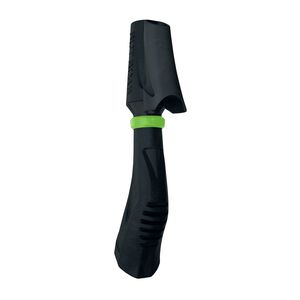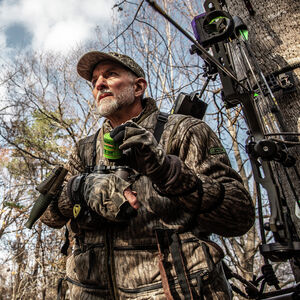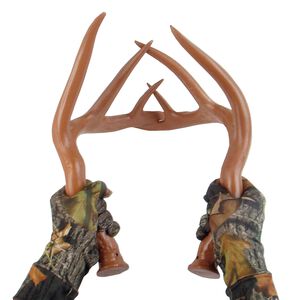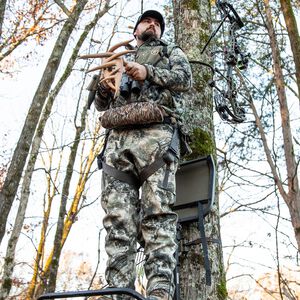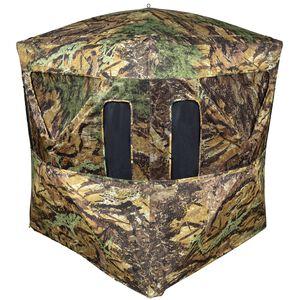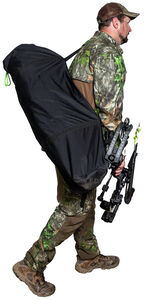DON'T BE AFRAID TO CALL
Many people are afraid that calling too much will spook deer in the area. What many don’t realize is deer are constantly making noises communicating with each other, and we just can’t hear them. Don’t get me wrong, you don’t need to be calling every 30 seconds for hours on end however, but don’t be afraid to pick up your grunt call or rattling antlers! When the pre-rut is in full swing, go ahead and call ever 10-15 minutes. Here’s the rational. Bucks are up on their feet cruising this time of year, and just because you called once and they didn’t flock in, doesn’t mean it’s time to give up. At the time you called, there simply might not have been a buck within earshot of your call. On the flip side, if a deer heard the call and didn’t come in, he probably wasn’t going to come in anyways, so you’re not out anything. By increasing the frequency of your calling, there’s a better chance a buck will hear you as he’s cruising for does!
PAINT A PICTURE
It’s important to remember to “paint a picture” for a prospective buck that your trying to lure into eyesight. Imagine a buck chasing a doe, and what that sounds like. The best way to mimic the chase is with a grunt tube and a bleat can. You always want to start off calling quietly, because a buck might be just outside of eyesight and the last thing you want to do is roar at him with a grunt call, and spook him. Grab a grunt call, like the Buck Roar or Rut Roar, and give 2-3 soft grunts spaced a second apart. Then wait for 5 minutes, to see if there was anything really close. If nothing happens, now it’s time to get a little bit louder to see if you can pull a deer in from way out there. This is where the Buck Roar and Rut Roar really shine, as you can get loud on them without sacrificing sound quality. Do the same grunt sequence but louder, and at the end give a longer guttural grunt. Pause for 10 seconds, because if any deer is within hearing distance, he’ll stop and listen intently. Now it’s time to sweeten the deal! Take the Can and flip it over twice in a row. This will give the buck a sense that there is an intruder in his territory chasing after one of his honeys! Continue this sequence every 10-15 minutes, and don’t be afraid to mix it up. When bucks are chasing does they constantly making noise and the does often are too. So imagine this chase, and don’t be afraid to mix grunts and estrus bleats together. If you are on the ground, start rustling leaves, and snapping a few twigs even, it adds that much more realism to your sequence.
GET AGGRESSIVE
It’s time to reach out and touch them! Rattling is a more aggressive tactic, and not every buck is going to be looking for a fight but if the man of the woods hears a fight going on, he’s going to want to investigate! Primos Fightin’ Horns are designed with the same density, and structure as real deer antlers so they replicate the sound of a knock down drag out fight to a tee. The sound of antlers cracking together carries much further than a grunt call or bleat, so you’ll be able to cover more territory. Although subordinate bucks might not come running in, often times they’ll hear the commotion and slink in looking to investigate. Again, you need to paint the picture. Start with the same grunt and bleat sequence, but this time take your rattling horns or rattle bag and whack them together forcefully a couple of times. Then continue to rattle for another 15 seconds. This says to a buck that’s listening, a buck was just chasing a hot doe and now another buck came in and is trying to steal her…I better get in there too! Now, if you’ve watched deer fight it’s rarely a 2-3-minute-long constant battle. They’ll stop and posture at each other and then resume the fight. Lock up their antlers, and then continue. So don’t overdue the rattling. It’s also effective at the onset of the rut, to lightly work the antlers together to mimic two smaller bucks sparing. This can be just the ticket to pull in that big bruiser into your lap.
Related Products
VIDEO TRANSCRIPTION
Primos Hunting, Stream the language.
Should I call to a white-tailed deer when I'm not looking at him? Absolutely, we call it “blind calling”. Deer of very vocal all through the season even in the summer, deer are vocal especially does when it comes to having fawns with them. When you're calling, especially blind calling in the fall of the year basically what you're saying is “hey I'm a deer and I'm over here” it's something simple and something subtle. I like doing that sometimes in the early season just through the woods especially if I'm hunting a good food source and what I like to do when I'm blind calling is call soft you don't want to get out there and blare the woods down. You are making deer sounds and chances are when you're making deer sounds, you're not going to spook deer but make those sounds subtle because you never know how close the deer is to you. What I like to do if I'm blind calling is start off like this (makes grunt call sound) now I know to the human ear that's not very loud but on a good cool crisp morning you'd be amazed at how far a white-tailed deer can hear that. I'm gonna say several hundred yards because I've actually watched and witnessed their react to that light calling. Just simple calling and give it about 10 to 15 minutes in between, especially when you're blind call it because oh they're gonna come in cautious they're looking for another deer so when you're blind calling pay attention call sparingly about every 10 to 15 minutes and do it softly especially in the early season.
